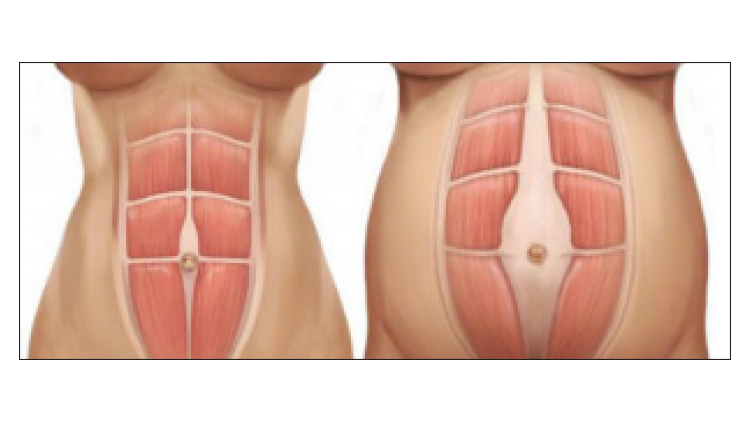Hot Topic Alert! Diastasis Recti
Diastasis Recti Abdonminus (DRA) affects 1 in 3 pregnant women.
Diastasis Recti (often referred to as ‘mummy tummy’ or separated abdominals from pregnancy) is a common condition that can happen when the pressure of a growing baby causes excess stretching of the pregnant mom’s abdominal wall. The postpartum result can mean a significantly weakened core, pelvic floor dysfunction and back pain, coupled with a pouch of loose skin and a gap between the abdominal muscles.
So the two biggest questions we receive are How do I prevent this from happening to me? and How do I fix this? The answer to both of these questions is that you need to see a Pelvic Health Physiotherapist who can give you specific strategies for your individual situation.
We are fortunate to have the opportunity to collaborate with Dr. Sinead Dufour, who is a Researcher (PhD) of all things Pelvic Health. She is also a Pelvic Health Physiotherapist in Milton and Oakville, a Professor and lecturer at McMaster University, and on the teaching faculty of Bia Formation and Reframe Rehab and Pelvic Health Solutions.
Dr. Sinead has shared her most recent research on DRA with us, which is on our website. Here is a summary in laymen’s terms:
Summary 1: Don’t get too obsessed about how many fingers you can fit inside the “gap”. The tension of your abdominal wall is what matters more!
Summary 2: Your pelvic floor and abdominal muscles work together. You need to ensure you know how to properly engage your pelvic floor muscles to activate your core.
Summary 3: Diastasis Recti is caused by excessive pressure pushing out on the abdominal wall (think growing baby, poor posture or breathing mechanics, even a man with a beer belly can get diastasis recti). It’s not as simple as just calling the condition “separated abs”.
Summary 4: To reduce unnecessary strain on the pelvic floor and abdominal wall, research shows that women should be allowed to be mobile during labour and not confined to a bed. They should also avoid intense valsalva bearing down style pushing, and ideally wait until they feel the urge to push themselves.
Summary 5: Don’t be afraid to move! Movement is medicine. Find yourself a specialized pelvic physiotherapist to help you if you’re experiencing pelvic pain!
Thank you so much for sharing your expertise with us Dr. Sinéad! Grateful to collaborate with you!
Nia O'Sullivan, Compass Rose Wellness Inc.














